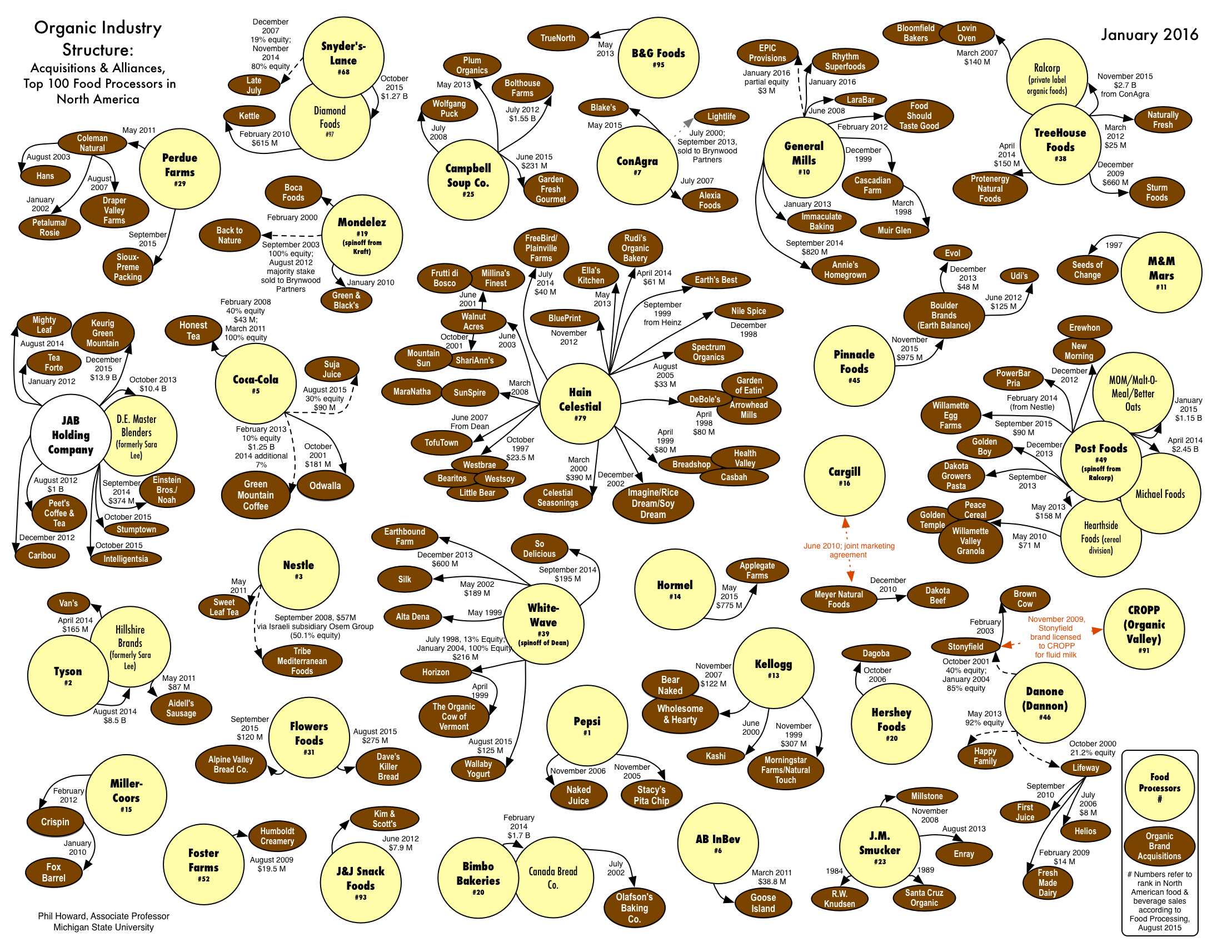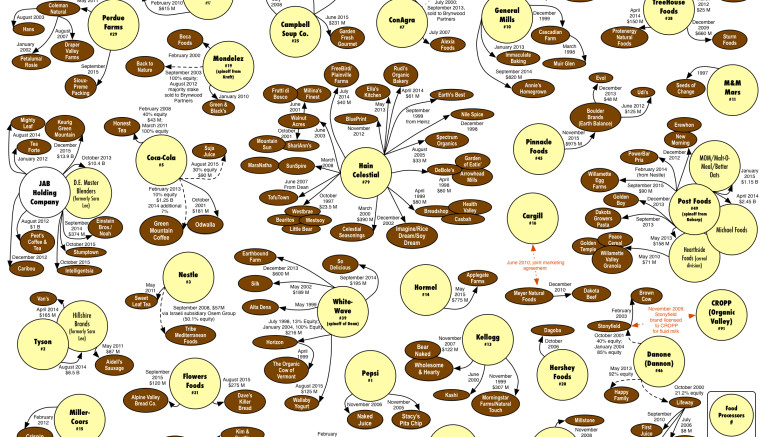 Where the US corporations lead the rest of the world follows, the organic market is no different.
Where the US corporations lead the rest of the world follows, the organic market is no different.
The US organic market is the world’s leading organic market, in 2013 Statista estimated it at 24, 347 million Euros, as opposed to Europe’s largest organic market Germany 7,550 million Euros (See http://www.statista.com/statistics/244375/revenue-of-organic-food-in-europe-and-the-united-states/) :
Organically certified food is in that premium food category loved by corporations, a niche market that is up to a point price insensitive. Organic buyers motivated primarily by perceived health benefits, and secondly by the environmental benefits of organic production allow corporations to increase their profit yields by paying a larger premium for organic. The major US food corporations have been quick to step in. The reality is that in the US, as in Europe, the majority of organic produce is not bought at farmers markets or direct from producers, they are just a side show, the real business is through major retailers.
Large food corporations are of a size that can negotiate with large retailers and the wider range of produce they can offer the more powerful negotiating hand they hold.
According to Dr. Phil Howard, an Associate Professor in the Department of Community Sustainability at Michigan State the first acquisition wave was between December 1997 and October 2002, this coincided with the launch and implementation of the US organic standards which regularised the rules for certified organic produce. A second wave started after 2012,
Dr. Howard observes, “I expect more deals to occur, since organic foods sales continue to increase faster than sales of conventional foods, and corporations are flush with cash and/or access to cheap credit.”
Source: The Cornucopia Institute

